EVGA Supernova 850 G2 Power Supply Review
by E. Fylladitakis on May 30, 2014 6:00 AM EST- Posted in
- Cases/Cooling/PSUs
- PSUs
- EVGA
- Super Flower
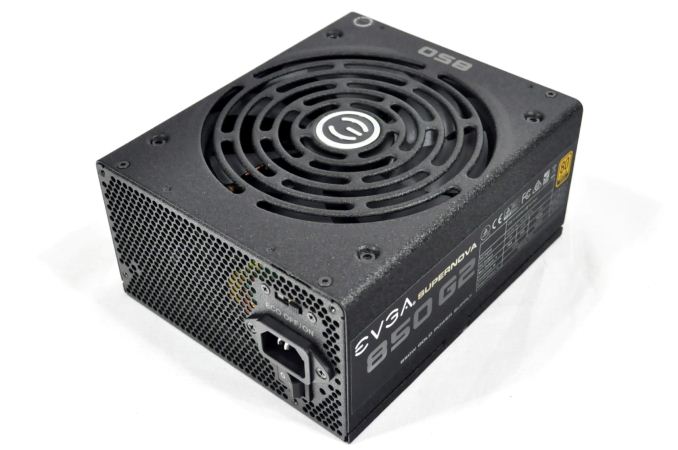
Introduction
Diversification is the natural course for a growing company, especially if they reach the point where they cannot grow any further within their target markets, which often happens when markets become saturated. As you might expect, most of the larger graphics card manufacturers have been trying to diversify into other markets lately, as the profit margins continue to diminish and competition is becoming brutal. A few weeks ago, we had a look at XFX's effort to enter the chassis market with a gaming mid-tower case. Today, we are reviewing EVGA's effort to deliver a high performance power supply, the Supernova 850 G2. This isn't EVGA's first PSU, as they first started shipping PSUs over a year ago, but they're still a relative newcomer to the PSU scene.
While naming a power supply after an exploding star may not be the most sensible choice, the Supernova 850 G2 is based on the very popular Superflower Leadex platform, so we are off to a good start here. It features an 80 Plus Gold efficiency certification and, as its name suggests, the rated maximum continuous power output of this particular model is 850 Watts. Pay attention to the details however, as this unit's maximum power rating is at an ambient temperature of 50 °C. Other notable features of this particular model include an "ECO thermal fan control" and a ten-year warranty, all for $129.99 after rebate. Sounds too good to be true? Read on to find out more about the quality, performance and features of the Supernova 850 G2.
| Power specifications (Rated @ 50 °C) | |||||
| AC INPUT | 100 - 240 VAC, 10A, 50 - 60 Hz | ||||
| RAIL | +3.3V | +5V | +12V | +5Vsb | -12V |
| MAX OUTPUT | 24A | 24A | 70.8A | 3.0A | 0.5A |
| 120W | 849.6W | 15W | 6W | ||
| TOTAL | 850W | ||||
Packaging and bundle
EVGA supplies the Supernova 850 G2 inside a large, aesthetically plain cardboard box. All of the unit's major specifications and features are printed on the rear of the box. The PSU is well protected with a combination of polyethylene foam and cardboard pieces.
Inside the box, we find a bag for the modular cables, five long Velcro strips for cable management, black mounting screws, and a typical AC power cable. EVGA also supplies a jump-start ATX connector that may be used to start the PSU without a motherboard, a perhaps unusual but welcome addition to the bundle of the power supply (this can be useful for doing things like running a Bitcoin ASIC, bleeding a water block, or anything else where you need to power on the PSU without booting a PC).
The Supernova 850 G2 is a fully modular unit, meaning that every single cable is detachable, including the main ATX cable. For improved aesthetics, EVGA ditches the color-coded wires for all-black wires; however, they are not using ribbon-like black cables without sleeving but normal free wires wrapped in black sleeving instead.


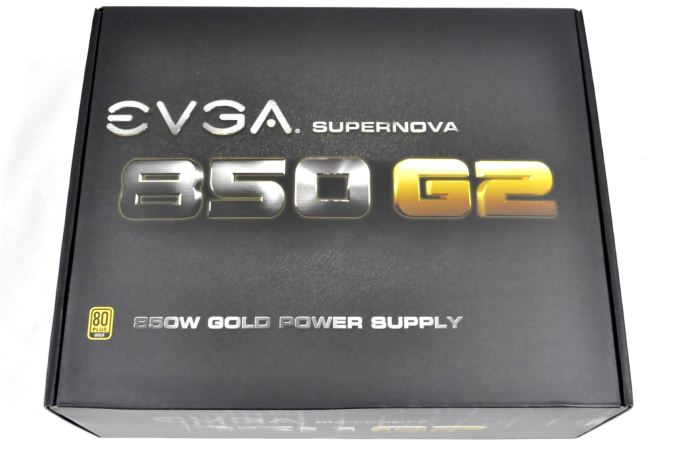
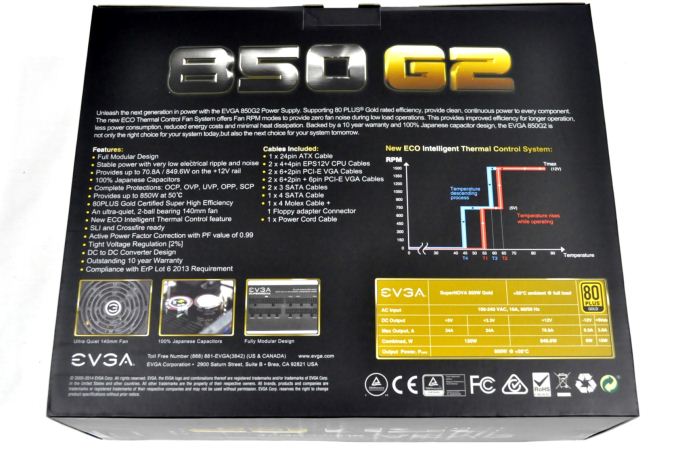
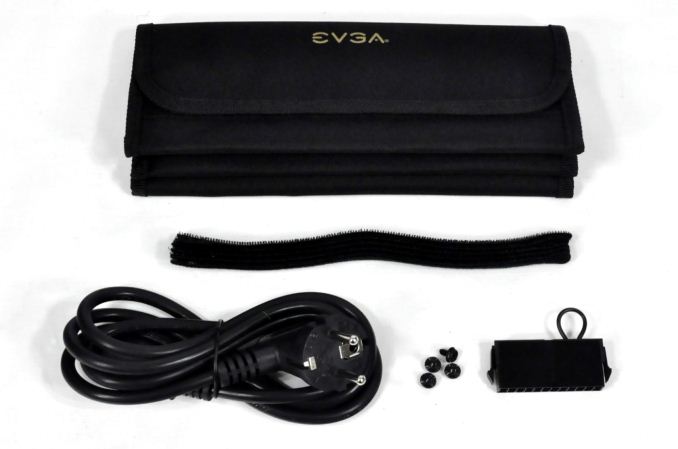
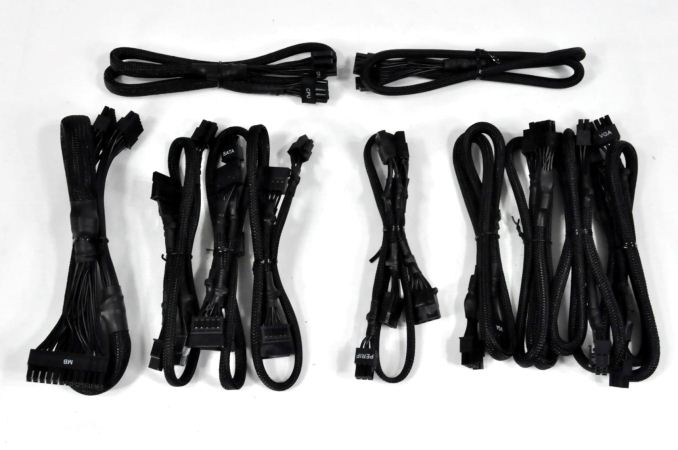








22 Comments
View All Comments
Galatian - Friday, May 30, 2014 - link
Why so snark? At last try some constructive criticism.To the Author: a ATX power supply jumper is useful for example when you set up your water cooling loop and you need to bleed in first and to check if there are any leaks. Therefore you don't want the entire system to be powered on obviously.
JarredWalton - Friday, May 30, 2014 - link
Speaking as someone that has done plenty of time with Bitcoin and other cryptocurrencies -- and as the person that added that comment -- I can assure you that using it with BTC ASICs is indeed a plausible scenario, though perhaps becoming less so as everything moves to higher performance ASICs with built-in PSUs.patrickjchase - Friday, May 30, 2014 - link
An ATX P/S jumper is also useful if you want to power a storage enclosure.I use an 850W P/S in a Norco 4224 (4U rackmount case with 24 3.5" hot-swap bays) with an SAS expander in place of the motherboard.
Tunnah - Friday, May 30, 2014 - link
To the author of this comment: you do realise you sound like a complete and utter tool ? If you have something to add, add it, no need to be such a snarky git.bsim500 - Friday, May 30, 2014 - link
"EVGA 850w review, Corsair 1500w review, Corsair 1000w review, LEPA 1700w PSU coming soon", etc.All very nice, but for a change, given the increasing popularity of Mini-ITX, how about a low-end PSU series test of 60-360w PSU's for non-gamers/light gamers/HTPC/office box/net box, etc, that comprise the vast majority of general usage scenario's? I mean 60-160w pico-PSU plus maybe the Seasonic G360 (lowest wattage Gold rated full ATX)?
Removing the discrete GFX card from my main i5-3570 rig, it maxes out at all of 90w (exc monitor) 4T Prime load at 4GHz and idle's at a lowly 24w. An i3-based HTPC / office box typically draws 24-70w. Add a 7790 XBOne equivalent card, and it still barely pulls 120w max when gaming. Yet you wouldn't believe how many tech sites continue to test such usage scenarios with 800-1500w PSU's with low-watt efficiencies that are way down at 50-70%, which results in completely useless figures for the typical uses such machines are built for...
marc1000 - Friday, May 30, 2014 - link
I believe they already did one small-psu test over here, but I'm not able to find it now. google it around a bit.And I agree such big PSUs are not the best option currently. Of course for high-end gaming/computing it does make sense, but with midrange getting better and better each generation, we will soon have a hard time buying such power-hungry computers.
I myself use an i5+gtx660 and run a lot of games. Most of the time I'm limited by v-sync, and not the hardware. I'm not a professional, just play for fun, so no reason to upgrade. My system is powered by a simple 350w unit from Akasa - I'm living on the edge here, but it works: no bluescreens nor shutdowns nor performance hit.
DanNeely - Friday, May 30, 2014 - link
I'd like to see more small/mainstream PSU reviews too. The problem is that most hardware reviewed is whatever the OEMs are willing to provide; meaning there's a large bias towards halo devices over everything else.Death666Angel - Sunday, June 1, 2014 - link
Depends on wether or not people are interested in 120Hz gaming @ 1440p or even 60Hz @ 2160p. For that kind of stuff you need SLI/CF unless you - more or less drastically - reduce IQ.E.Fyll - Sunday, June 1, 2014 - link
True; most of our upcoming reviews will be of high output units. As mentioned, we are limited to what companies like to provide for testing and, for various reasons, every PR department likes to promote the best they have, even though it does not account for the majority of their revenue. This applies to virtually everything, from sewing needles to cars, not just PSUs. However, I have requested low output units from several manufacturers and some of them were positive, therefore we should be posting such reviews in the following months as well.teyink - Saturday, May 31, 2014 - link
Picked this up for $109.99 after rebate today.